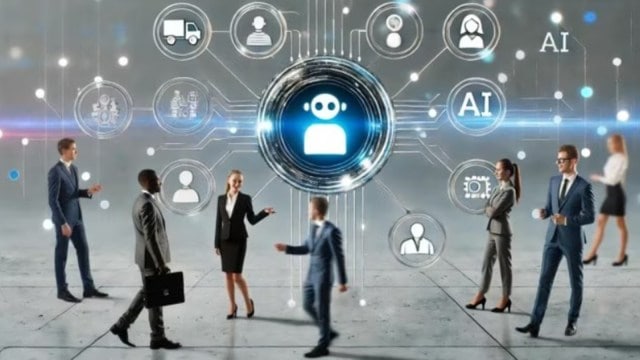New Yale study shows no significant impact of AI on US job market
The Budget Lab study highlighted that while the anxiety over the impact of AI on US labor market is widespread, data suggests that it remains "speculative."
 Based on the data, the study revealed that the job mix for AI is changing faster than it has in the past, however, not so significantly. (Image generated via AI)
Based on the data, the study revealed that the job mix for AI is changing faster than it has in the past, however, not so significantly. (Image generated via AI)Surprised? I was too. A new study conducted by Yale University, ‘Evaluating the Impact of AI on the Labor Market: Current State of Affairs,’ revealed that the larger labour market has not witnessed a “discernible disruption” since ChatGPT’s release in 2022.
This analysis of the United States job market contradicts the emerging studies conducted since the introduction of generative AI nearly 3 years ago, that led to a universal anxiety around AI’s potential to contribute to loss of jobs across sectors, and an increase in global unemployment rates.
“While anxiety over the effects of AI on today’s labor market is widespread, our data suggests it remains largely speculative,” reads the study from Yale’s Budget Lab, a policy research centre on economics.
The Yale’s Budget Lab, a team consisting of Martha Gimbel, Molly Kinder, Joshua Kendall, and Maddie Lee, analysed job data, employment status of college graduates, and rate of exposure of different groups of workers to AI tech, in the past 33 months. Based on the data, it revealed that the job mix for AI is changing faster than it has in the past, however, not so significantly.
Analysis of jobs market in 1984 and 1996
Underlining that “Computers didn’t become commonplace in offices until nearly a decade after their release to the public, and it took even longer for them to transform office workflows,” the study stated, “new AI technologies will go on to impact the labor market as much, or more, dramatically, it is reasonable to expect that widespread effects will take longer than 33 months to materialise.”
It highlighted that the changes in the occupational mix — the distribution of workers amongst all the jobs in the economy — since the advent of generative AI in 2022 seem to “mirror the trends seen during the three comparison periods,” — 1984-1989, 1996-2002, and 2016-2019.
“The potential effects of AI on the labor market so far are not out of the ordinary,” it noted. According to data cited by the study, the recent trend is not necessarily attributable to AI.
It added that the changes were “sluggish” compared with the 1940s and 50s when the job market underwent upheaval specifically related to the second world war, The Guardian quoted.
Industry-wise findings
As per the study, the Information, Financial Activities, and Professional and Business Services sectors have witnessed larger shifts in the job mix compared to shifts in the aggregate labor market, with the largest changes in the Information sector.
This sector, which includes newspaper, movies, data processing, has the highest exposure to generative AI.
However, findings suggest that these changes cannot be directly attributable to the advent of ChatGPT.
Jobs for college graduates
The study then analysed the occupational mix for recent college graduates (ages 20-24) as compared to that of their older counterparts (ages 25-34). Before conducting the study, the researchers suggested that if generative AI were substantially changing the labor market for recent college graduates, a growing dissimilarity in the occupational mix between these two groups would be imminent.
However, following the analysis of trend since January 2021, the dissimilarity between older and more recent college graduates rarely deviates outside of the 30-33 per cent range. “This implies that these trends of growing dissimilarity may pre-date ChatGPT’s release and may not be attributable to AI,” the study stated.
The study also cited data which mentioned that AI is impacting employment for early career workers but could also reflect a slowing jobs market.
Summary
The Budget Lab study highlighted that while the anxiety over the impact of AI on US labor market is widespread, data suggests that it remains “speculative.”
“The picture of AI’s impact on the labor market that emerges from our data is one that largely reflects stability, not major disruption at an economy-wide level,” the study read.
“While generative AI looks likely to join the ranks of transformative, general purpose technologies,” the Yale study read, “It is too soon to tell how disruptive the technology will be to jobs.”
Limitations of the study
Analysing occupations by “exposure” likely under-estimates potential labor market disruption, as the top tier of exposure will involve “occupations which are theoretically exposed but not actively using AI at a meaningful scale, and thus unlikely to see AI impacts”.
Therefore, to accurately measure AI’s impact on labor force, the most important data needed is comprehensive usage data from all the leading AI companies at the individual and enterprise level, including APIs.







